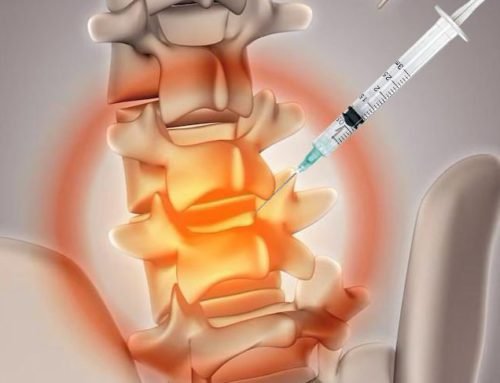Chronic lower back pain is a pervasive issue that affects millions of people worldwide. It can severely impact one’s quality of life, limiting daily activities and productivity. Understanding the causes of chronic lower back pain and exploring effective treatment options are crucial steps in managing and alleviating this condition.
Common Causes of Chronic Lower Back Pain
1. Degenerative Disc Disease
Degenerative disc disease occurs when the intervertebral discs, which act as cushions between the vertebrae, begin to wear down. This degeneration can lead to pain, weakness, and numbness. Age-related changes are the most common cause, but injuries and repetitive stress can also contribute.
2. Herniated Discs
A herniated disc, also known as a slipped or ruptured disc, happens when the soft inner core of the disc protrudes through a tear in the outer layer. This can press on spinal nerves, causing pain, tingling, and weakness in the lower back and legs. Improper lifting techniques, traumatic injuries, and repetitive activities can increase the risk.
3. Spinal Stenosis
Spinal stenosis is the narrowing of the spinal canal, which puts pressure on the spinal cord and nerves. This condition often results in chronic lower back pain, leg pain, and difficulty walking. It is frequently caused by aging, arthritic changes, and spinal injuries.
4. Spondylolisthesis
Spondylolisthesis occurs when a vertebra slips forward over the one below it. This slippage can compress nerves and cause lower back pain, stiffness, and muscle tightness. Congenital defects, traumatic injuries, and degenerative changes are common causes.
5. Osteoarthritis
Osteoarthritis is a type of arthritis that affects the joints and can cause chronic pain in the lower back. It involves the breakdown of cartilage, leading to pain, swelling, and reduced mobility. Age, obesity, and previous joint injuries are significant risk factors.
6. Sacroiliac Joint Dysfunction
The sacroiliac joints connect the spine to the pelvis and can become a source of chronic pain when they are inflamed or dysfunctional. Injuries, arthritis, and pregnancy can contribute to sacroiliac joint dysfunction, resulting in pain that radiates to the lower back and buttocks.
Effective Treatments for Chronic Lower Back Pain
1. Physical Therapy
Physical therapy is a cornerstone in the treatment of chronic lower back pain. A tailored exercise program can strengthen the muscles supporting the spine, improve flexibility, and reduce pain. Manual therapy, postural training, and aerobic conditioning are essential components of an effective physical therapy regimen.
2. Medications
Medications can provide significant relief for chronic lower back pain. Nonsteroidal anti-inflammatory drugs (NSAIDs), muscle relaxants, and pain relievers are commonly prescribed. For severe cases, opioids or antidepressants may be considered under close medical supervision.
3. Injections
Injections can deliver medications directly to the source of pain, providing targeted relief. Epidural steroid injections, nerve blocks, and facet joint injections are commonly used to reduce inflammation and alleviate pain. These treatments can offer temporary relief and facilitate participation in physical therapy.
4. Lifestyle Modifications
Adopting healthy lifestyle changes can significantly impact the management of chronic lower back pain. Maintaining a healthy weight, practicing good posture, and avoiding prolonged sitting can reduce strain on the lower back. Incorporating regular exercise, stretching, and strength training can enhance overall spinal health.
5. Alternative Therapies
Alternative therapies such as acupuncture, chiropractic care, and massage therapy can complement traditional treatments. These therapies can help reduce pain, improve mobility, and promote relaxation. Mind-body practices like yoga and meditation can also support pain management by reducing stress and enhancing physical function.
6. Surgery
Surgery is considered when conservative treatments fail to provide relief or when there is significant structural damage. Spinal fusion, discectomy, and laminectomy are common surgical procedures for chronic lower back pain. Surgery aims to stabilize the spine, relieve nerve compression, and restore function.
Preventive Measures
1. Ergonomics
Proper ergonomics in the workplace and at home can prevent chronic lower back pain. Ensuring that workstations are set up to support good posture and using ergonomically designed furniture can reduce strain on the back. Regular breaks and stretching exercises are also beneficial.
2. Exercise and Fitness
Regular physical activity is crucial for maintaining a healthy back. Low-impact exercises such as walking, swimming, and cycling can improve cardiovascular health without putting excessive strain on the spine. Core strengthening exercises help stabilize the spine and prevent injuries.
3. Proper Lifting Techniques
Using correct lifting techniques can prevent injuries that lead to chronic lower back pain. It is important to lift with the legs, keep the back straight, and avoid twisting movements. When lifting heavy objects, seeking assistance can prevent unnecessary strain.
4. Healthy Diet and Weight Management
Maintaining a healthy diet and managing weight can reduce the risk of developing chronic lower back pain. Excess weight, especially around the abdomen, puts additional strain on the lower back. A balanced diet rich in calcium, vitamin D, and anti-inflammatory foods supports overall spinal health.
Managing Chronic Lower Back Pain
Chronic lower back pain is a multifaceted condition with various underlying causes. By understanding these causes and exploring a range of effective treatments, individuals can find relief and improve their quality of life. Combining medical interventions, lifestyle modifications, and preventive measures can help manage and alleviate chronic lower back pain effectively.
Get relief for chronic back pain by visiting the Prolotherapy Clinic in Hadapsar, Pune. Our clinic specializes in advanced back pain treatments, utilizing the latest techniques in prolotherapy to provide long-lasting pain relief and improved mobility.




